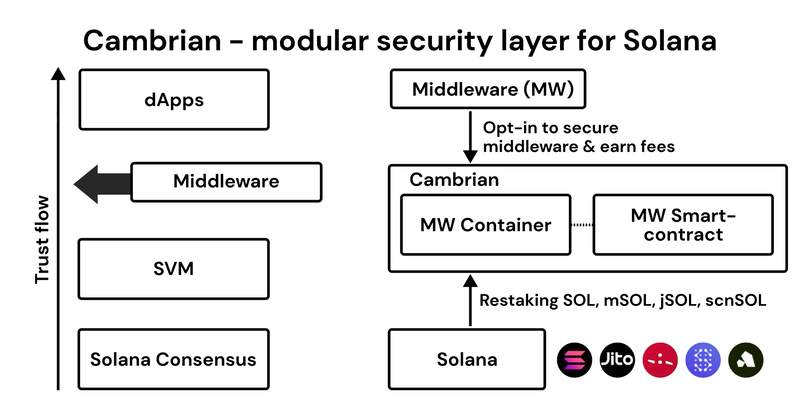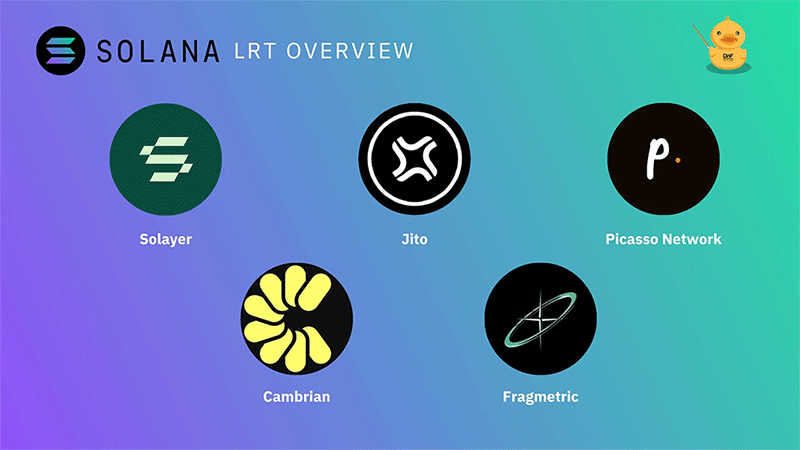Liquid Restaking Token (LRT) services had been at the forefront of attention in the Ethereum ecosystem, but the focus has since shifted to Solana, with a number of notable projects seeing the light. Read further if you want to learn more in the new article by the DWF Ventures team.
Why Liquid Restaking Became Popular
Staking has always been a key feature of any Proof-of-Stake blockchain, serving as the backbone of its validation process and consensus mechanism.
Liquid staking became the next step for users aiming to enhance capital efficiency: instead of just locking cryptocurrency in a staking contract, they also get a liquid staking token (LST) to further deploy in DeFi protocols for additional yield―hence the “liquid.”
The largest, and, probably, the most prominent liquid staking protocol responsible for popularizing this approach is Lido, which alone accounts for about 30% of all the staked Ethereum (ETH) market, as of August 2024.
On Solana, Jito leads the liquid staking scene, commanding around 50% of the market with its LST, jitoSOL, followed by Marinade (~16% of staked SOL; mSOL token), Jupiter (~10% share with jupSOL), and others.
Now, we’re observing a new mechanism: liquid restaking tokens (LRTs), striving to ensure even higher profitability. LRT allows you to stake your LSTs, receiving a second “layer” of tokens that can also be used in DeFi. While this technique comes with more financial complexity and higher risks, liquid restaking still appeals to users due to higher yields.
LRT Services on Solana
Solayer
Launched in mid-May 2024, Solayer has attracted significant attention, amassing over $190 million in TVL with 4 live endoAVSs.
Endogenous Actively Validated Services (AVSs), or endoAVS, allows a Solana-native dapp to optimize network operations according to its stake size, ensuring faster and more reliable user transactions.
In other words, with endoAVS user transactions are accelerated based on the stake ratio, inducing higher yields to attract stakers. Validators with a higher stake have a correspondingly higher priority for executing their on-chain transfers.
Picasso Network
Built on the Cosmos SDK, Picasso Network operates as a bridge between Solana and Cosmos, enabling cross-ecosystem security through multi-asset restaking. Essentially, this allows cross-ecosystem messages sent via Cosmos’ Inter-Blockchain Communication Protocol (IBC) to be secured by leveraging the economic security of Solana.

The project claims to be pioneering the first interoperability solution of its kind, while also positioning itself as the first “generalized restaking layer.”
Using IBC, Picasso facilitates exchange of data between various blockchain platforms. This isn’t limited to just asset transfers: IBC can handle messages, contract calls, and even fee transfers. The Picasso team views IBC as a more secure alternative to traditional cross-chain solutions.
And, unlike EigenLayer, Picasso has been striving to build a “generalized” restaking service, which allows for restaking assets across multiple chains.
Since its launch in January 2024, Picasso Network has gained around $4.9 million in TVL.
Jito
In late July, Jito introduced Jito Restaking, a multi-asset service consisting of two key components: the Vault Program and the Restaking Program.
Vaults are designed for operations with Liquid Restaking Tokens (VRTs) by Node Consensus Operators (NCN), including their minting, burning and delegation across operators, as well as customizing slashing conditions for risk management.
The Restaking Program, on the other hand, serves as a unified interface for a wide range of operations. It supports both staking and restaking, allowing users to manage NCNs, enhance token utility, establish insurance funds, and scale base layers. Essentially, it’s a one-stop shop for maximizing the efficiency of AVSs while improving staking versatility.
It will be interesting to watch how things unfold, especially with:- the potential shift of JitoSOL liquidity toward restaking;
- the partnership with Renzo, which could introduce EVM liquidity into the ecosystem;
- the adoption of NCNs across the board, particularly through Solana’s SPL token standard.
Other Noteworthy Projects
We have a couple more projects to highlight. First is Cambrian, which is focused on creating a “modular security layer” for Solana. In this framework, SOL holders validate new software modules being developed on the network. In Cambrian's vision, restaking provides economic security, not just for dapps but also for entire chains running on Solana.

Fragmetric is another liquid restaking protocol currently in development, using fragSOL as its Liquid Restaking Token (LRT). Though still in the works, it's expected to play a significant role in the expanding restaking ecosystem.
Conclusion
With the liquid restaking space growing, we obviously anticipate new tech and mechanisms, along with the increase of competition in this niche for the Solana ecosystem in the coming months.
We always look for innovative web3 projects. If you happen to be building in the LRT space and are looking into partnering with a tier-one venture capital firm, feel free to reach out to DWF Ventures directly.



